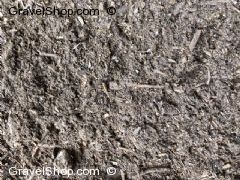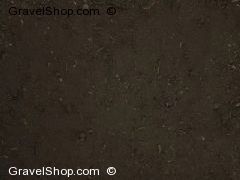$ 0.00
What is soil?
Soil is the top layer of the Earth's surface, made up of minerals, organic material, water, and air. It supports plant life by providing nutrients, water, and a place for roots to grow. Soil forms over time through the breakdown of rocks and the decomposition of organic matter, influenced by factors like climate, organisms, and the shape of the land. Soil is typically dark or light brown in color.
Soil consists of different layers, called horizons, that vary in texture, color, and composition leading to different "types of soil" and uses. It is essential for agriculture, ecosystems, and the environment, as it helps store water, supports biodiversity, and filters pollutants.
What is soil used for?
Soil is used for various purposes, mainly to support plant growth, landscaping, and environmental management. Different types of soil mixes are tailored for specific uses, such as garden mix soil, topsoil near me, bulk garden soil, potting soil, or land reclamation. Each of these soil types serves a unique purpose, catering to different gardening, and landscaping, ensuring plants receive the right conditions to thrive.
Garden Mix: A nutrient-rich blend of topsoil and organic matter for healthy garden beds, promoting strong plant growth.
Potting Soil: Lightweight, sterile mix for container gardening, offering excellent drainage and aeration.
Soil Compost Mix: Topsoil combined with compost to enhance soil structure, fertility, and water retention.
Topsoil: The nutrient-rich upper soil layer used for gardening and landscaping to support plant growth.
Unscreened Topsoil: Natural topsoil with rocks and debris, suitable for large-scale filling and landscaping.
Read about Topsoil via our Topsoil Blog.
What is Dirt used for?
Dirt is generally used in construction, landscaping, and various land reclamation projects where fertility or nutrient content is less of a concern than stability, structure, or volume. Different types of dirt such as fill dirt or back fill dirt serve specific purposes, from filling holes to creating a stable base for building.
Fill Dirt: Subsoil used in construction and landscaping for filling depressions and creating stable foundations.
Overburden Dirt: Material removed during mining, used for land reclamation and stabilizing landscapes.
Select Fill: Uniformly screened dirt blend used in construction for creating stable foundations and level surfaces.
Top Fill: General-purpose dirt for filling large areas, leveling terrain, and raising ground levels, not suitable for planting.
Yard Dirt: Versatile dirt for outdoor landscaping and gardening, including topsoil and subsoil for filling holes and building up areas
For more on Fill dirt read our Fill Dirt Blog.
What is Compost?
Compost is a nutrient-rich organic material created by the decomposition of plant and animal matter, such as leaves, food scraps, and manure. It serves as a natural fertilizer and soil conditioner, improving the structure, water retention, and fertility of the soil. Compost is an essential component in gardening and agriculture, as it adds beneficial microorganisms and nutrients that enhance plant growth.
What is Clay and Sandy Loam?
Clay contains soft particles of less than 4 micrometers that become moldable when wet, and when dry acts as a cushion to the ground. Clay is commonly used for baseball fields and horse tracks. Sandy Loam is a mixture of silt, sand and clay used for planting and works well as a bedding for lawns and sod. Sandy Loam offers a balance between the water-holding capacity of clay and the drainage properties of sandy soil.
Soil vs Dirt
Essentially soil vs dirt are the same material, yet their chemical make-up and therefore uses differ.
Soil is described as a living, natural mixture of minerals, organic matter, water, air, and countless organisms that interact with one another making it fertile and capable of supporting life. Soil serves as a medium for plant growth, helps regulate water, and provides habitat for many organisms. Most soils will be screened, extracting any large organic materials, yet some that are unscreened may include a few small twigs or wood chips.
Dirt, on the other hand, lacks the structure, nutrients, and microbial life that soil has and is not considered able to support plant growth or natural processes. Dirt will likely contain rocks, organic materials such as branches, clay, sand, and other materials not found in soil. For instance, if you're looking for 'fill dirt near me' or 'where to buy fill dirt', you'll find options that cater to construction and landscaping rather than gardening needs.
This is an important difference to understand when you're looking to purchase 'potting soil vs fill dirt', as one is used to help your garden grow while the other is best used to fill holes within your yard. For gardening purposes, you might search for 'garden mix soil near me' or 'bulk garden soil for raised bed'. You may also want to explore the 'best garden mix soil' or 'garden mix soil ratio' to ensure you have the right soil composition for your plants. Of course, it is advised to read the product description for the best explanation and recommended uses.
In addition, understanding 'what is topsoil used for' can help you choose between various 'types of soil', such as 'topsoil examples' and 'fill dirt'. When selecting soil for specific uses, consider checking 'topsoil price' and whether you need 'topsoil by the truckload' or 'bags of topsoil' for smaller projects.
Why order from gravelshop
Gravelshop helps find 'dirt near me', 'Where to buy fill dirt by the truckload', and 'soil near me' that is affordable, hassle-free, and delivered quickly. Your project is our priority.
Don't know how much you should buy for your project? Visit our Soil & Dirt Calculator.
Reliable Quality, Delivered Affordably - Your Project, Our Priority.
Soil is the top layer of the Earth's surface, made up of minerals, organic material, water, and air. It supports plant life by providing nutrients, water, and a place for roots to grow. Soil forms over time through the breakdown of rocks and the decomposition of organic matter, influenced by factors like climate, organisms, and the shape of the land. Soil is typically dark or light brown in color.
Soil consists of different layers, called horizons, that vary in texture, color, and composition leading to different "types of soil" and uses. It is essential for agriculture, ecosystems, and the environment, as it helps store water, supports biodiversity, and filters pollutants.
What is soil used for?
Soil is used for various purposes, mainly to support plant growth, landscaping, and environmental management. Different types of soil mixes are tailored for specific uses, such as garden mix soil, topsoil near me, bulk garden soil, potting soil, or land reclamation. Each of these soil types serves a unique purpose, catering to different gardening, and landscaping, ensuring plants receive the right conditions to thrive.
Garden Mix: A nutrient-rich blend of topsoil and organic matter for healthy garden beds, promoting strong plant growth.
Potting Soil: Lightweight, sterile mix for container gardening, offering excellent drainage and aeration.
Soil Compost Mix: Topsoil combined with compost to enhance soil structure, fertility, and water retention.
Topsoil: The nutrient-rich upper soil layer used for gardening and landscaping to support plant growth.
Unscreened Topsoil: Natural topsoil with rocks and debris, suitable for large-scale filling and landscaping.
Read about Topsoil via our Topsoil Blog.
What is Dirt used for?
Dirt is generally used in construction, landscaping, and various land reclamation projects where fertility or nutrient content is less of a concern than stability, structure, or volume. Different types of dirt such as fill dirt or back fill dirt serve specific purposes, from filling holes to creating a stable base for building.
Fill Dirt: Subsoil used in construction and landscaping for filling depressions and creating stable foundations.
Overburden Dirt: Material removed during mining, used for land reclamation and stabilizing landscapes.
Select Fill: Uniformly screened dirt blend used in construction for creating stable foundations and level surfaces.
Top Fill: General-purpose dirt for filling large areas, leveling terrain, and raising ground levels, not suitable for planting.
Yard Dirt: Versatile dirt for outdoor landscaping and gardening, including topsoil and subsoil for filling holes and building up areas
For more on Fill dirt read our Fill Dirt Blog.
What is Compost?
Compost is a nutrient-rich organic material created by the decomposition of plant and animal matter, such as leaves, food scraps, and manure. It serves as a natural fertilizer and soil conditioner, improving the structure, water retention, and fertility of the soil. Compost is an essential component in gardening and agriculture, as it adds beneficial microorganisms and nutrients that enhance plant growth.
What is Clay and Sandy Loam?
Clay contains soft particles of less than 4 micrometers that become moldable when wet, and when dry acts as a cushion to the ground. Clay is commonly used for baseball fields and horse tracks. Sandy Loam is a mixture of silt, sand and clay used for planting and works well as a bedding for lawns and sod. Sandy Loam offers a balance between the water-holding capacity of clay and the drainage properties of sandy soil.
Soil vs Dirt
Essentially soil vs dirt are the same material, yet their chemical make-up and therefore uses differ.
Soil is described as a living, natural mixture of minerals, organic matter, water, air, and countless organisms that interact with one another making it fertile and capable of supporting life. Soil serves as a medium for plant growth, helps regulate water, and provides habitat for many organisms. Most soils will be screened, extracting any large organic materials, yet some that are unscreened may include a few small twigs or wood chips.
Dirt, on the other hand, lacks the structure, nutrients, and microbial life that soil has and is not considered able to support plant growth or natural processes. Dirt will likely contain rocks, organic materials such as branches, clay, sand, and other materials not found in soil. For instance, if you're looking for 'fill dirt near me' or 'where to buy fill dirt', you'll find options that cater to construction and landscaping rather than gardening needs.
This is an important difference to understand when you're looking to purchase 'potting soil vs fill dirt', as one is used to help your garden grow while the other is best used to fill holes within your yard. For gardening purposes, you might search for 'garden mix soil near me' or 'bulk garden soil for raised bed'. You may also want to explore the 'best garden mix soil' or 'garden mix soil ratio' to ensure you have the right soil composition for your plants. Of course, it is advised to read the product description for the best explanation and recommended uses.
In addition, understanding 'what is topsoil used for' can help you choose between various 'types of soil', such as 'topsoil examples' and 'fill dirt'. When selecting soil for specific uses, consider checking 'topsoil price' and whether you need 'topsoil by the truckload' or 'bags of topsoil' for smaller projects.
Why order from gravelshop
Gravelshop helps find 'dirt near me', 'Where to buy fill dirt by the truckload', and 'soil near me' that is affordable, hassle-free, and delivered quickly. Your project is our priority.
Don't know how much you should buy for your project? Visit our Soil & Dirt Calculator.
Reliable Quality, Delivered Affordably - Your Project, Our Priority.
© Copyright 2025. Powered by Sand Group USA inc.
Type your Zipcode
Type the zip code of the delivery address to see available products and prices.

 Tipload
Tipload Bulkbag Lifted
Bulkbag Lifted Bulkbag Pallet
Bulkbag Pallet Package
Package














